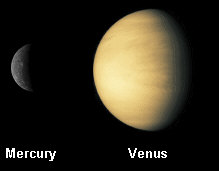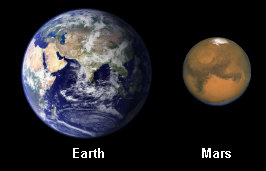Lab 1: Density and Gravity
More Review Questions
While the previous set of questions were more of a "bare bones"
review, these questions are (hopefully) more interesting, and some are
more focused on how we use these lab concepts to study the planets.
As before, if you've got the lab material down, then these questions should
be quick and easy.
The answers are not here... if you are unsure of an answer, try
going over the lab again,
discussing it with some other students,
or coming to see me.
- The scene is Europe during the Middle Ages,
and you are the Reigning Monarch of a particular country.
All in all, life is good.
One day, the Royal Alchemist bursts into the throne room,
his arms full of papers, books, rulers, beakers, and other equipment.
"I've done it! I've done it! I've figured out the secret
to turning lead into gold!"

As he begins babbling about catalysts, inscriptions, fish scales,
and who knows what else, you decide to see if you can come up with
a quick test to see if he really can do it.
If he changes one kilogram of lead into one kilogram of gold,
will the gold take up more or less space than the lead? (The density of
lead is 11.4 g/cm3, and the density of gold is
19.3 g/cm3.)
- Let's imagine that around a distant star,
three planets are discovered that astronomers
have named Huey, Dewey, and Louie. They all have the same radius,
and are all about the same distance from their sun. None of them have
an atmosphere.
After careful study, we believe that Huey is mostly made of
rock and metal--layers of rock surrounding a large metal core.
Dewey is also rock and metal, but its metal core is smaller
(so it has more rock and less metal than Huey).
Louie is made mostly of rock and ice.

Of these three planets, which would have the greatest density?
The greatest mass?
If you had a 1-kilogram iron bar, on which planet's surface would it
weigh the most?
If we found regions of the same material on each planet's surface
(like a particular kind of rock) and examined the craters we found,
which planet would have the largest-sized craters?
- It turns out that if you pile a planet's worth of material on
top of some rock or metal, the density of the rock or metal will
change a little bit: it'll be compressed somewhat. Because of this,
all of the planets have densities that are more than what their composition
would suggest. For example,
if you had an Earth-sized planet that was entirely made
of ice, the planet would have a density larger than ice's normal
density because the ice deep down will be compressed a little bit.
Here are the densities (compressed and uncompressed) for the four inner
planets:
Densities and Uncompressed Densities
of the
Four Inner Planets
| Planet | Density (g/cm3) |
Uncompressed Density (g/cm3) |
| Mercury | 5.45 | 5.3 |
| Venus | 5.24 | 4.3 |
| Earth | 5.50 | 4.4 |
| Mars | 3.90 | 3.74 |


Looking at the uncompressed densities for the four planets, we can see that
even though Earth is denser than Mercury, Mercury is made of materials that
are normally denser than those that make up Earth.
These four planets are
all made primarily of rock and metal. Which planet seems to have the greatest
fraction of metal? Which one seems to have the least?
Review Questions...
Extra Questions...
Back to Lab 1.
Back to the main page.



